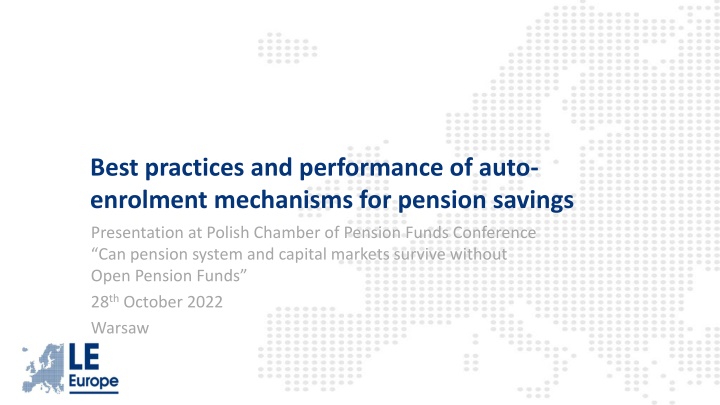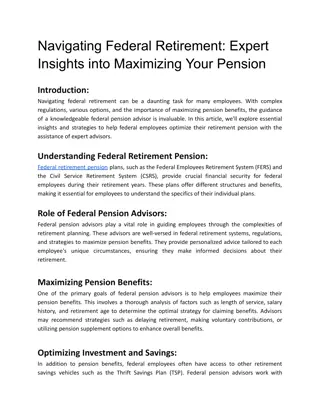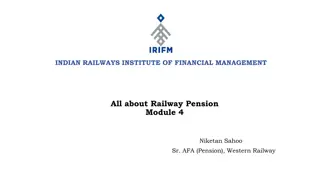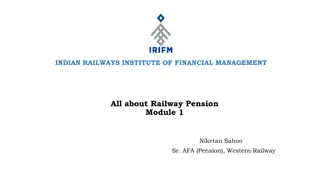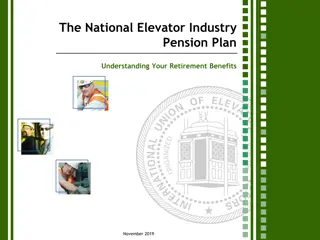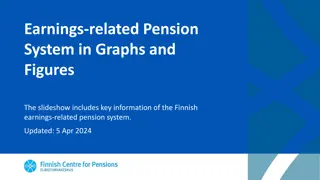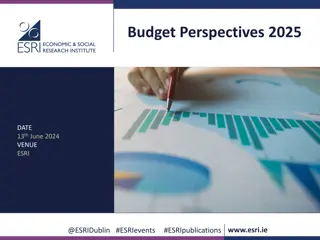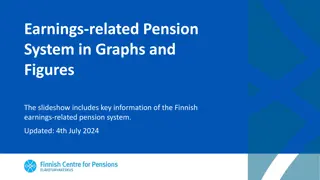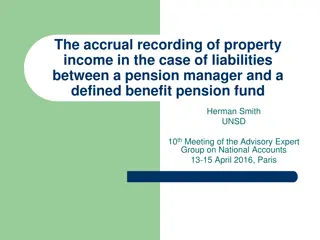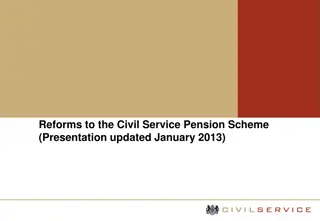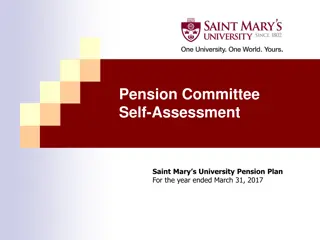Best Practices & Performance of Auto-Enrolment Mechanisms for Pension Savings
This presentation delves into best practices for pension auto-enrolment, exploring the impacts on participation, savings, and returns. It includes a scoreboard assessment and recommendations for implementation stages of a saver's journey.
Download Presentation

Please find below an Image/Link to download the presentation.
The content on the website is provided AS IS for your information and personal use only. It may not be sold, licensed, or shared on other websites without obtaining consent from the author.If you encounter any issues during the download, it is possible that the publisher has removed the file from their server.
You are allowed to download the files provided on this website for personal or commercial use, subject to the condition that they are used lawfully. All files are the property of their respective owners.
The content on the website is provided AS IS for your information and personal use only. It may not be sold, licensed, or shared on other websites without obtaining consent from the author.
E N D
Presentation Transcript
Best practices and performance of auto- enrolment mechanisms for pension savings Presentation at Polish Chamber of Pension Funds Conference Can pension system and capital markets survive without Open Pension Funds 28thOctober 2022 Warsaw
Outline of aims, scope and approach Aims To produce a list of best practices for pension auto-enrolment with a scoreboard, based on an analysis of auto- enrolment mechanisms and alternative policy approaches Scope Funded (either statutory funded, occupational or personal) schemes that complement public pensions Geographical scope: 13 EU Member States (DK, DE, ES, FI, FR, HR, HU, IT, LT, NL, PL, RO, SE) and five other jurisdictions (UK, US, CA, NZ, TR) Mixed-methods approach: Literature review Stakeholder consultations Data collection and statistical/econometric analysis (a. panel of countries, b. individuals in IT) Case studies / country fiches (details on next slide) Expert review (individual reviews + workshop on best practices identified on a preliminary basis) On-going feedback from DG FISMA and from EIOPA and OECD 2
Identification of best practices Implementation Participation decision Accumulation phase Decumulation phase Growing entitlements within funds Fund choice Best practice recommendations and LE Europe s suggestions are made in relation to implementation and four stages of a saver s journey: Participation decision Accumulation phase: fund choice Accumulation phase: growing entitlements Decumulation phase The best practices have been assessed against their impacts on participation, savings and returns, receivinga relative assessment score of high, medium or low It is important to emphasise that the 32 best practices presented overleaf are indeed all best practices, having been shortlisted from a longer set of practices observed, despite some having a relative assessment score of medium or low 3
Best practices scoreboard Implementation of auto-enrolment pension schemes Relative Best practices assessment score High Establish consensus High Define policy goals Medium Risk-based supervision Medium Phased introduction Medium Information campaigns 4
Best practices scoreboard Participation decision Relative Best practices assessment score High Mandatory access provision High No waiting period (minimum tenure requirement) High Employer contributions Low Automatic re-enrolment Low Fixed government contributions Low Voluntary opt-in Low Minimum eligible age of at most 18 years old Low Inclusion of self-employed workers Low Earnings triggers 5
Best practices scoreboard Accumulation phase: Fund choice (i.e., choice of a fund and/or provider) Relative Best practices assessment score High The presence of a default fund Default fund features - capped cost, use of life-cycle investment strategies, no joining fee High Medium Authorisation of providers by regulators Low Establishment by the state of a low-cost provider Constraint on the number of investment strategies (also known as funds ) offered per provider Low 6
Best practices scoreboard Accumulation phase: Growing entitlements within funds Relative Best practices assessment score High Transparent presentation of costs and charges Governance in the best interests of pension scheme members High High Ease of access to costs and charges information High Default contribution rates High Measures to avoid the proliferation of small pots Medium Centralised administration Low Contribution holidays Low Design and implementation of solidarity clauses 7
Best practices scoreboard Decumulation phase (i.e., converting pension savings into retirement income) Relative Best practices assessment score The transition from accumulation to decumulation (choice architecture consistency) High High Default option Medium Early access Low Review of advice sector by regulators Low Signposting service for accessing advice 8
The case of auto-enrolment in Poland: Looking forward Automatic re-enrolments begin next year, in 2023 Participation may improve relative to the first round of enrolments as the scheme has had time to bed in and Covid- related disruption is less But cost-of-living pressures arising from high inflation may discourage participation Could larger employer and government contributions incentivise greater participation? Employer and (for most people) government contributions are appreciably larger in the UK s successful auto- enrolment scheme and in New Zealand s KiwiSaver than in PPKs Increasing employer and government contributions would have costs to employers and the government If such a change were to be implemented it would need to be consulted on and implemented over an appropriate timeframe Given the importance of (a lack of) trust in Poland s experience of auto-enrolment, an information campaign may help to reduce opt-outs Behavioural insights can be used to make such a campaign more impactful The campaign should have clear aims and be launched sufficiently early to have an impact 9
Questions? 10
The executive summary of the study can be found at https://op.europa.eu/en/publication-detail/- /publication/f38012ee-5190-11ec-91ac-01aa75ed71a1/language-en/format-PDF/source-search The full study can be found at https://op.europa.eu/en/publication-detail/-/publication/6f40c27b-5193- 11ec-91ac-01aa75ed71a1/language-en/format-PDF/source-search 11
Contact details Patrice Muller - pmuller@le-europe.eu Luke Pate lpate@oxfordeconomics.com 12
